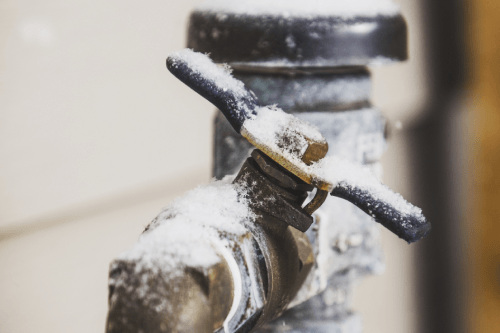Key Methods for Preventing Frozen Pipes in Winter
Key Methods for Preventing Frozen Pipes in Winter
Blog Article
Almost everyone will have their own unique perception involving Prevent Frozen Pipes .

Winter can damage your pipes, specifically by freezing pipes. Right here's just how to avoid it from taking place and what to do if it does.
Intro
As temperatures decline, the threat of frozen pipelines boosts, possibly causing costly repair work and water damages. Understanding how to prevent icy pipelines is vital for house owners in cool climates.
Avoidance Tips
Shielding susceptible pipelines
Wrap pipelines in insulation sleeves or make use of heat tape to safeguard them from freezing temperatures. Concentrate on pipelines in unheated or outside areas of the home.
Home heating strategies
Maintain interior rooms effectively warmed, particularly areas with plumbing. Open up cupboard doors to enable warm air to circulate around pipes under sinks.
Just how to recognize icy pipelines
Look for reduced water circulation from taps, uncommon smells or sounds from pipes, and visible frost on exposed pipes.
Long-Term Solutions
Structural modifications
Take into consideration rerouting pipes away from outside wall surfaces or unheated locations. Include extra insulation to attics, basements, and crawl spaces.
Upgrading insulation
Invest in high-quality insulation for pipelines, attics, and walls. Proper insulation assists keep constant temperature levels and minimizes the threat of frozen pipelines.
Shielding Outdoor Pipes
Yard pipes and outside taps
Disconnect and drain pipes garden hoses prior to winter months. Set up frost-proof faucets or cover exterior taps with insulated caps.
Comprehending Frozen Pipelines
What creates pipes to freeze?
Pipelines ice up when revealed to temperatures listed below 32 ° F (0 ° C) for expanded durations. As water inside the pipes freezes, it broadens, putting pressure on the pipe wall surfaces and potentially triggering them to break.
Dangers and problems
Icy pipelines can bring about supply of water disturbances, residential property damages, and costly repair services. Burst pipes can flood homes and create considerable architectural damages.
Indicators of Frozen Pipeline
Identifying frozen pipes early can stop them from breaking.
What to Do If Your Pipes Freeze
Immediate actions to take
If you presume icy pipes, maintain faucets available to alleviate pressure as the ice melts. Utilize a hairdryer or towels taken in hot water to thaw pipelines slowly.
Conclusion
Preventing frozen pipes calls for proactive actions and fast feedbacks. By comprehending the causes, signs, and safety nets, homeowners can secure their pipes throughout cold weather.
5 Ways to Prevent Frozen Pipes
Drain Outdoor Faucets and Disconnect Hoses
First, close the shut-off valve that controls the flow of water in the pipe to your outdoor faucet. Then, head outside to disconnect and drain your hose and open the outdoor faucet to allow the water to completely drain out of the line. Turn off the faucet when done. Finally, head back to the shut-off valve and drain the remaining water inside the pipe into a bucket or container. Additionally, if you have a home irrigation system, you should consider hiring an expert to clear the system of water each year.
Insulate Pipes
One of the best and most cost-effective methods for preventing frozen water pipes is to wrap your pipes with insulation. This is especially important for areas in your home that aren’t exposed to heat, such as an attic. We suggest using foam sleeves, which can typically be found at your local hardware store.
Keep Heat Running at 65
Your pipes are located inside your walls, and the temperature there is much colder than the rest of the house. To prevent your pipes from freezing, The Insurance Information Institute suggests that you keep your home heated to at least 65 degrees, even when traveling. You may want to invest in smart devices that can keep an eye on the temperature in your home while you’re away.
Leave Water Dripping
Moving water — even a small trickle — can prevent ice from forming inside your pipes. When freezing temps are imminent, start a drip of water from all faucets that serve exposed pipes. Leaving a few faucets running will also help relieve pressure inside the pipes and help prevent a rupture if the water inside freezes.
Open Cupboard Doors
Warm your kitchen and bathroom pipes by opening cupboards and vanities. You should also leave your interior doors ajar to help warm air circulate evenly throughout your home.

I'm certainly very fascinated with Prevent Frozen Pipes and I am praying you enjoyed reading the new piece. Those who enjoyed reading our blog entry please consider to pass it around. Thanks for going through it.
Contact Report this page